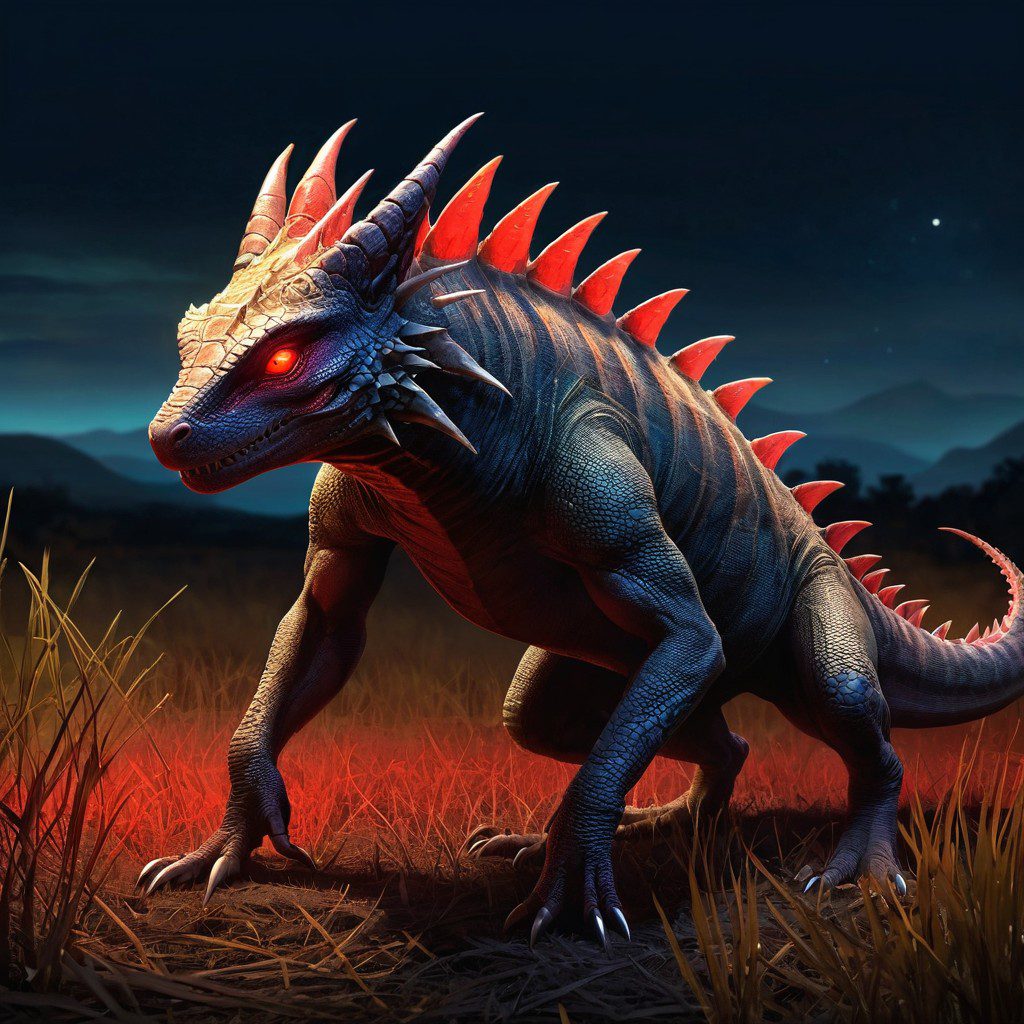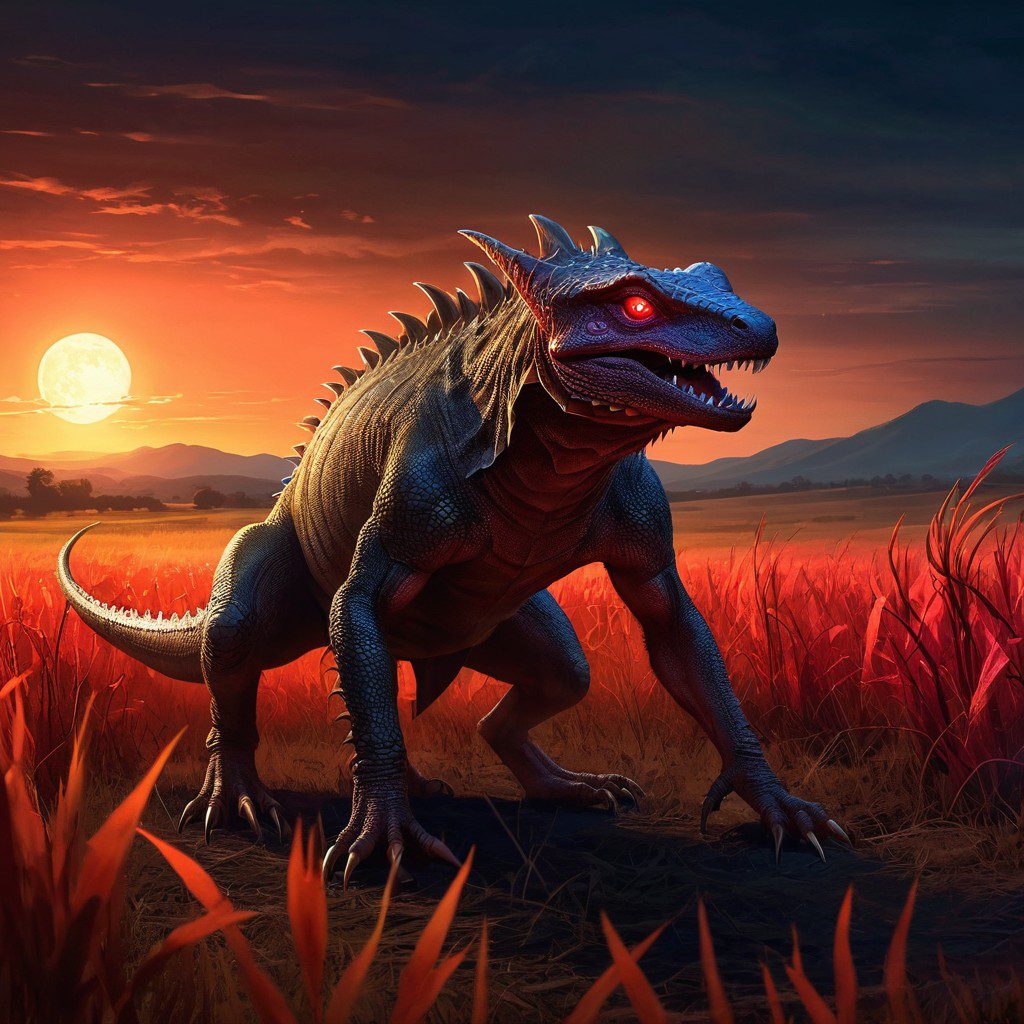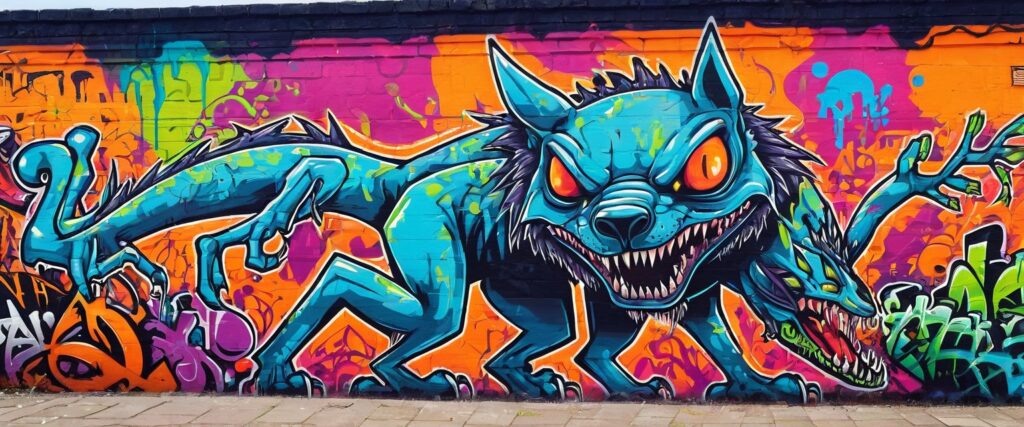Chupacabra: The Blood-Sucking Creature of Modern Mythology

In the shadowy corners of Latin American folklore, a terrifying creature known as the Chupacabra has captured imaginations and stoked fears for decades. Described as a vampiric beast with sharp fangs and glowing eyes, the Chupacabra has become one of the most infamous cryptids in modern mythology. Stories of livestock found drained of blood, mysterious sightings, and eerie encounters have given rise to a legend that spans multiple countries and cultures. While the Chupacabra’s true nature remains a mystery, its place in modern folklore is firmly established as a terrifying symbol of the unknown.
The Origins of the Chupacabra Myth
The Chupacabra, which means “goat-sucker” in Spanish, is a relatively recent addition to cryptozoological lore. Unlike many legendary creatures that have roots in ancient mythology, the first reports of the Chupacabra only surfaced in the mid-1990s. The origin of the modern Chupacabra myth is often traced back to Puerto Rico in 1995, when a series of mysterious livestock deaths left farmers baffled. In these cases, goats, sheep, and other animals were found with puncture wounds on their necks and their blood completely drained.
Initial descriptions of the Chupacabra portrayed it as a strange, reptilian creature with spines down its back, standing upright on two legs like a kangaroo. However, as the legend spread, reports of Chupacabra sightings began to vary, with some claiming it resembled a wild dog or a coyote with mange. Despite the differing physical descriptions, the one constant was the creature’s blood-sucking habits, preying on livestock in rural areas and leaving behind bodies drained of blood.
The Chupacabra: A Creature of Two Forms
Over time, two primary versions of the Chupacabra emerged in popular lore:
- The Reptilian Chupacabra: The original version of the Chupacabra, reported primarily in Puerto Rico and later in Latin American countries like Mexico and Chile, is often described as a reptilian or alien-like creature. This version is said to be about 4 to 5 feet tall, with greenish, scaly skin and sharp spines running down its back. It has glowing red or yellow eyes, long fangs, and a forked tongue. This version of the Chupacabra walks on two legs and is often compared to creatures from science fiction.
- The Canine Chupacabra: In more recent years, particularly in the southern United States, reports of the Chupacabra have taken on a different form. This version resembles a hairless, dog-like creature with a gaunt body, long limbs, and exaggerated fangs. Many sightings of this Chupacabra are thought to be wild animals, such as coyotes or dogs suffering from mange, a skin condition that causes hair loss and a sickly appearance. Despite its more “natural” appearance, this version of the Chupacabra is still blamed for attacks on livestock and continues to stir fear in rural areas.
Both versions of the Chupacabra are said to share one key trait: the ability to suck the blood of its prey. Animals attacked by the Chupacabra are often found with puncture wounds on their necks and little to no blood in their bodies, giving rise to the idea that the creature is a type of vampiric predator.
The Spread of the Chupacabra Legend

Following the initial reports from Puerto Rico in the 1990s, the legend of the Chupacabra quickly spread across Latin America and the United States. The creature became a subject of fascination in countries like Mexico, Brazil, Chile, and even as far north as Texas. In each region, the story of the Chupacabra evolved to reflect local culture and fears, blending modern cryptid lore with long-standing traditions of supernatural creatures and animal attacks.
In Mexico, the Chupacabra became part of everyday discourse, with sensational news reports and tabloid stories fueling the creature’s notoriety. Farmers across rural parts of Mexico began reporting dead livestock, leading to speculation that the Chupacabra was to blame. This mass panic even led to organized Chupacabra hunts, with people hoping to track down the creature responsible for the livestock deaths.
Similarly, in the southern United States, particularly in Texas, sightings of a strange, hairless creature resembling a dog or coyote became linked to the Chupacabra legend. Local farmers reported finding their livestock dead under mysterious circumstances, and soon, the canine version of the Chupacabra was firmly established in American cryptid lore.
Chupacabra Theories and Explanations
Despite numerous sightings and reports, there is no concrete scientific evidence to support the existence of the Chupacabra as a unique species. Instead, many experts believe that the Chupacabra phenomenon is the result of misidentifications or hoaxes. Some common explanations include:
- Misidentified Animals: In the case of the canine Chupacabra, many supposed sightings have been attributed to coyotes, dogs, or foxes suffering from mange. This skin disease causes extreme hair loss, giving these animals a gaunt, unnatural appearance that could easily be mistaken for a cryptid. Their weakened state due to illness may also cause them to attack livestock more frequently, explaining the pattern of animal deaths.
- Cultural and Psychological Factors: The rapid spread of the Chupacabra legend across Latin America and the United States can also be attributed to mass hysteria and media sensationalism. The vivid descriptions of the Chupacabra, often based on eyewitness accounts, may have been fueled by a combination of fear, cultural storytelling traditions, and a tendency to interpret natural events (such as predatory animal attacks) in supernatural terms.
- Hoaxes and Fabrications: Some cases of Chupacabra sightings have been exposed as hoaxes, with individuals fabricating evidence, such as doctored photographs or planted animal remains, to gain attention. These hoaxes have contributed to the creature’s legendary status but have also made it difficult to separate fact from fiction.
While skeptics point to these explanations, believers continue to assert that the Chupacabra is a real, undiscovered creature that has simply evaded scientific scrutiny. For them, the lack of definitive evidence only adds to the allure of the mystery.
The Chupacabra in Modern Culture

Despite its relatively recent origins, the Chupacabra has become one of the most well-known cryptids in the world, joining the ranks of legendary creatures like Bigfoot and the Loch Ness Monster. Its image as a blood-sucking predator has made it a popular subject in books, movies, and television shows, particularly in the realm of horror and science fiction.
The Chupacabra has appeared in numerous TV shows, including The X-Files, where it was depicted as a dangerous alien creature, and Supernatural, where it is featured as one of many supernatural threats. The creature has also been a recurring figure in Latin American horror films, comic books, and urban legends.
In recent years, the Chupacabra has even inspired merchandise, video games, and internet memes, cementing its place as a modern cultural icon. Whether feared as a real threat or celebrated as a creature of myth, the Chupacabra continues to captivate people around the world.
Strengths and Weaknesses of the Chupacabra
Strengths:
- Vampiric Abilities: The Chupacabra is believed to drain the blood of its victims, making it a dangerous predator that leaves behind little trace except for dead animals.
- Stealth and Elusiveness: Despite numerous sightings and hunts, the Chupacabra has never been captured, contributing to its reputation as a highly elusive and stealthy creature.
- Shape-shifting Nature: The different forms of the Chupacabra—ranging from reptilian to canine—add to its mystery and make it harder to pin down, increasing its fear factor.
Weaknesses:
- Lack of Concrete Evidence: Despite the widespread panic and sightings, no physical evidence or definitive proof has been found to confirm the Chupacabra’s existence.
- Mundane Explanations: Many supposed Chupacabra sightings have been debunked as misidentifications of sick animals, hoaxes, or mass hysteria, weakening the cryptid’s credibility among skeptics.
- Localized Impact: The Chupacabra is typically blamed for attacks on livestock, limiting its mythological power to rural areas and diminishing its potential threat to humans.
The Chupacabra: Myth or Monster?
Whether seen as a frightening creature of the night or a modern-day urban legend, the Chupacabra continues to fascinate people worldwide. Its ability to cross cultural boundaries and adapt to different local myths has solidified its place as one of the most intriguing and enduring cryptids of our time.
From its roots in Puerto Rican folklore to its adoption by American and Latin American media, the Chupacabra has become a symbol of the unknown—a creature that lives on the fringes of belief, eluding capture while inspiring fear, curiosity, and speculation. Whether real or imagined, the legend of the Chupacabra is unlikely to fade any time soon.
